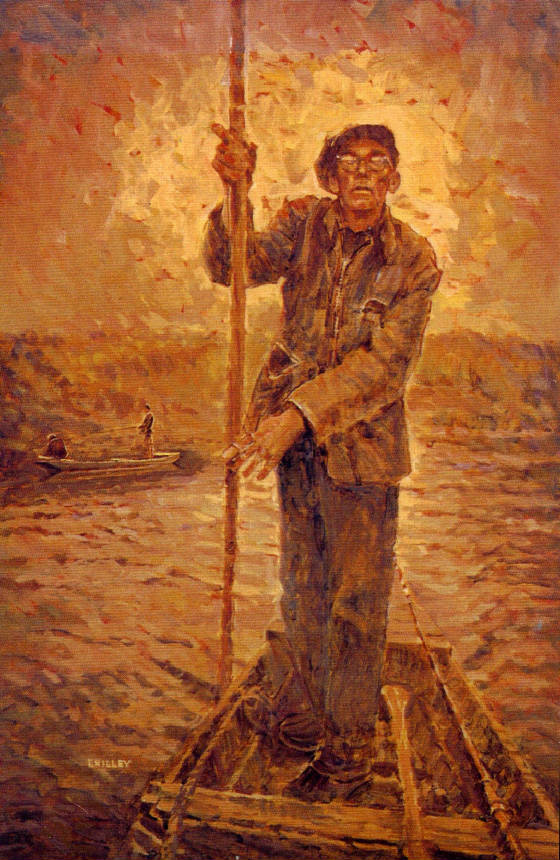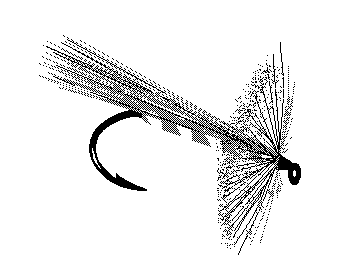Welcome to River Magic
Stillwater Slim on the Line... November 2, 2010
|
 Another Tribute to Dan MacIntosh
Recently I purchased Shirley E. Woods’ Angling for Atlantic Salmon, a limited edition book published in 1976 by The Angler’s & Shooter’s Press, Goshen, Connecticut. I had long wanted to read Mr. Woods’ highly regarded book and I became sufficiently motivated to procure a used copy following a telephone call from Mr. Woods himself. He has published many books and articles over the years, including children’s books and writings about financial matters, and now resides in Mahone Bay, Nova Scotia. Mr. Woods’ book is long out-of-print and he has no spare copies, needing to find one on the Internet, as I did, to give to a friend.
In the book’s preface, Mr. Woods writes “A basic tenet of my fly fishing education was that the greatest trophy one could hook was an Atlantic salmon. Experience has changed many of my original views on angling, but the salmon remains unchallenged at the top of the list.” And although his adventures include fishing trips to such storied waters as the rivers of Quebec, Anticosti, New Brunswick, Newfoundland, Labrador and Iceland, he saw fit to include Nova Scotia’s St. Mary’s River:
“The St. Mary's spills into the Atlantic Ocean some seventy miles north of Halifax. The river flows through farmland and has a pastoral quality quite different from that of the rushing streams of the deep woods. There are quite a few settlements along its course, and some of these have memorable names—e.g., Ecum Secum, Goshen, Garden of Eden, and Trafalgar. Owing to a number of factors, salmon are much less prolific on the St. Mary's than they once were. However, if you strike the river at the right time in June, when the first run is coming through, you will still stand a chance of taking a twenty-pounder.” “Although our guide knew the river intimately, we spent a lot of our time
driving in search of places to fish. Those we did find were small rapids where
brooks entered the stream, rather than proper pools, and in consequence offered
little scope for enjoyment. On the way home Dan stopped on a high bank which
overlooked a backwater, or "bogan", on the other side of the river.
Pointing to the pocket, he suggested I drop a dry fly there because it was a favorite
haunt of large sea trout. Measuring the distance with my eye, I realized it was
too far for me to cast and offered him the rod. I should mention that, because
of neglect and long storage, the silk "King Eider" fly line had become
"tacky" and was almost impossible to shoot through the guides. Dan
ignored this handicap and proceeded to give a casting demonstration which I have never seen equaled. He didn't bother to double haul, but cast with such force that I feared for the rod. With quick,
violent movements he lengthened the line and then shot it like a long snake across
the river. Just before the fly landed, he checked the forward movement abruptly,
and the lure parachuted gently to the placid surface. This was repeated fifteen or twenty
times; and while he didn't raise a trout, it was still a magnificent display
of controlled distance casting.”
Please stay on the line …
 |